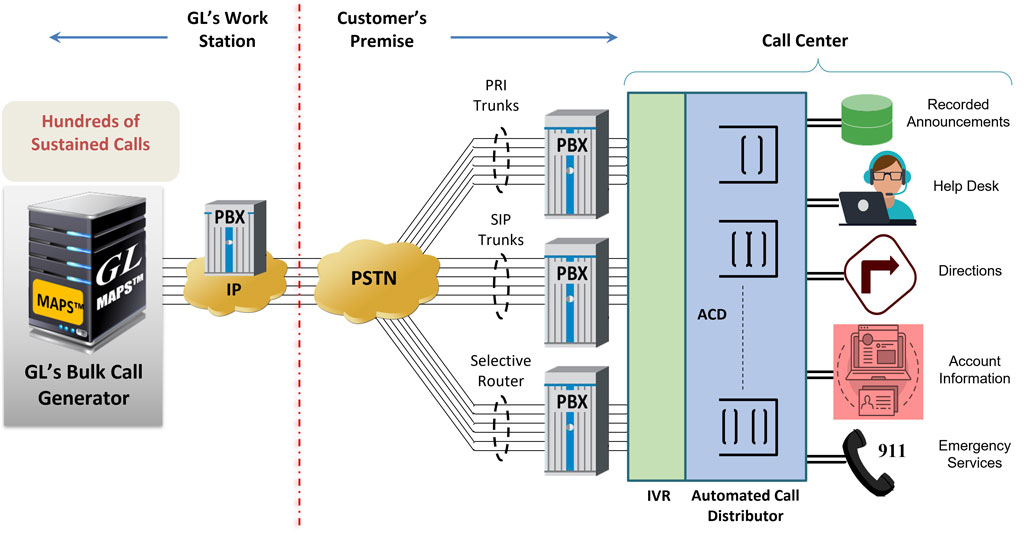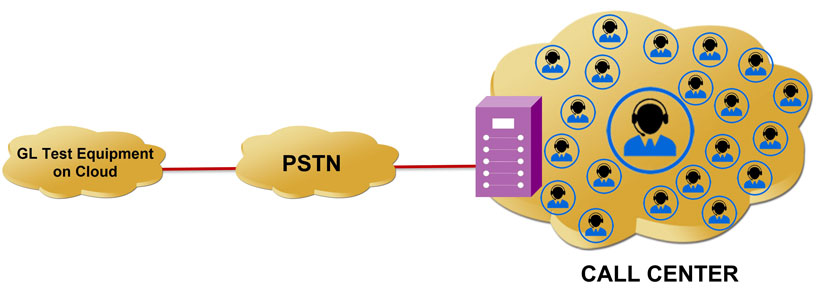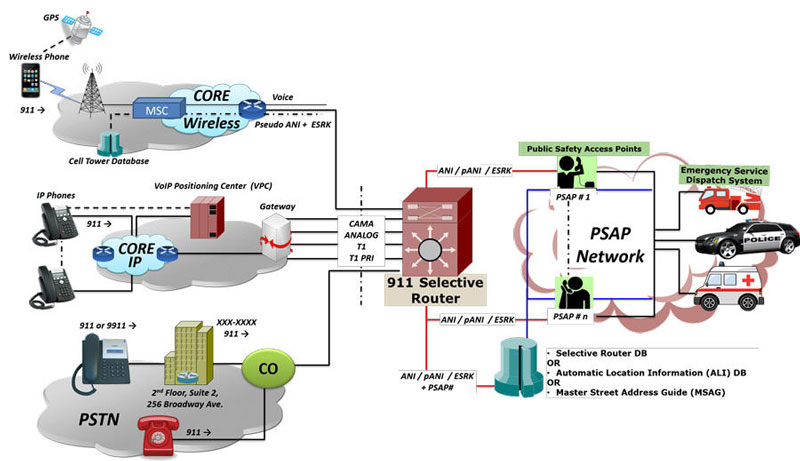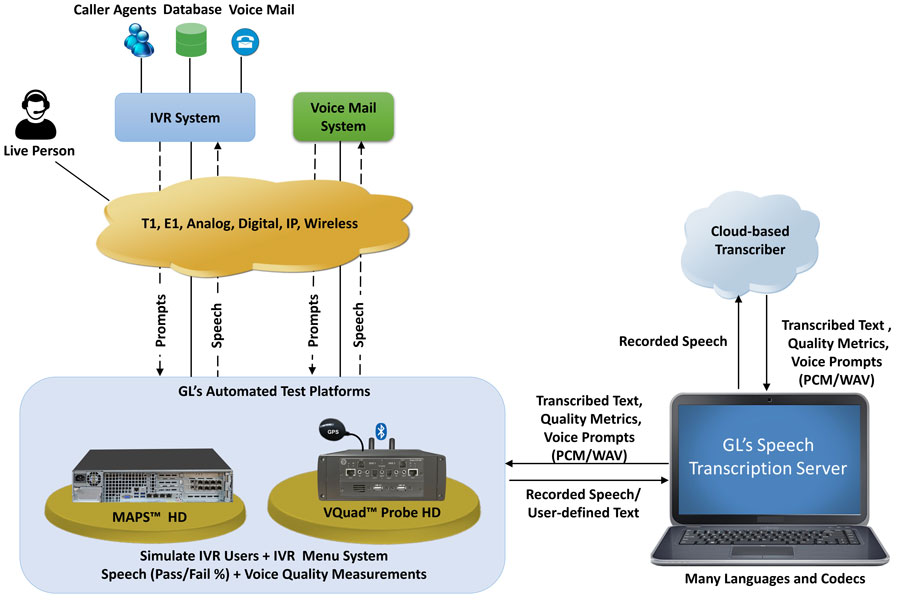Bulk Call Generation for Load Testing Call Centers
GL provides solutions to test call center functionality by automatically generating hundreds of calls from a lab environment or over the Public Switched Telephone Network (PSTN). GL’s Bulk Call Generation for Load Testing Call Centers can test Interactive Voice Response (IVR), Voicemail (VM) functionality for IP, Wireless and TDM Networks.

Overview
Testing call volume and routing is essential for Call Centers to confirm uninterrupted operation. GL Communications can generate hundreds of calls through the PSTN – at a sustained call rate – to your Call Center to test the telecommunications infrastructure and services. These calls can be generated as a service or directly from your lab environment by deploying the Call Generation test equipment. Calls can be generated to any network including VoIP, TDM, and mobile. Tens of thousands of companies and organizations rely on Call Centers to fulfil their mission critical capabilities and business functions including:
- 911 and emergency services
- Customer support
- Long Distance Services
These Call Centers can be overloaded in disaster situations or unexpected events. Therefore, organizations use redundant telecommunications connections to the outside world (PRI, SIP trunks, etc.). It is essential to test if these trunks properly rollover under high load.
Stress and loading processes can help test and simulate worst case scenarios and provide confidence that the network will continue to function under such conditions. GL’s Bulk Call Generators require an advanced network appliance which can generate and sustain high volume of calls with heavy traffic. If VoIP, then packets must be generated and output with high precision timing, zero packet loss and in the proper order.
Bulk Call Generation for Load Testing Call Centers
GL’s test equipment is hosted in the cloud can make calls to any destination worldwide.

- Generate hundreds of calls through the PSTN – at a sustained call rate – to your Call Center to test the telecommunications infrastructure and services
- These calls can be generated as a service or directly from your lab environment by deploying test equipment
- Calls can be generated to any network including VoIP, TDM, and mobile
- Call capacity of the Bulk Call Generation Solution include:
- PSTN Calls, up to 1000 sustained calls at 4 calls/s
- VoIP Calls, up to 2000 sustained calls at 30 calls/s
- VQT testing on both ends for both PSTN and VoIP
- IVR and VM traversal on both PSTN and VoIP
- Calls to anywhere in the world
- Customize all parameters of the test as shown below
- Number of simultaneous calls
- Number of calls per second
- Can send voice files or tones. Digits for IVR
- GL can do this at any time during the week or weekend, etc.
- GL will monitor the test in real-time
Applications
The following are typical applications where GL’s bulk call generator tools can be used:
- Test PBX, switch, gateways/routers
- Test IVR, voicemail, VoIP phones
- Generate hundreds of sustained calls with high call rate
- Voice, digits, tones, data, traffic generation
- Automate regression testing
- Feature testing

Public Safety Networks
GL offers complete simulation and monitoring solutions for traditional emergency 911 networks as well as Next-Generation IP-based emergency 911 networks. For more details, refer Testing Emergency Call Services: 911, Enhanced 911 (E-911) & NG-91 webpage.

Testing Interactive Voice Response (IVR) and Voice Mail (VM) Systems
GL’s test tools can be used to automate testing of IVR tree traversal for pass/fail conditions with great precision. Record each prompt (IVR menus) to file in an automated fashion and forward the recorded audio files for transcription and analysis. For more details, refer to Testing Interactive Voice Response (IVR) & Voice Mail (VM) Systems webpage.
 Back to Newsletter Index Page
Back to Newsletter Index Page